A high-quality product roadmap can help businesses avoid many headaches. It sets clear product goals and outlines what customers can expect. With a visual roadmap, companies can communicate product plans with customers, gather feedback, and improve the quality of products.
Before introduction, let me introduce Boardmix Whiteboard, a fantastic collaboration tool for creating, sharing, and editing charts, graphics, images, and documents. Boardmix can be a game-changer for building product roadmaps. Here's why:
- Visual Tools: Boardmix offers a variety of visual aids like charts, flowcharts, stickers, and shapes, making it easy to create clear, intuitive product roadmaps.
- Real-time Collaboration: Boardmix allows multiple team members to work on the same document simultaneously, especially for remote or distributed teams. Team members can also leave comments and feedback directly on the roadmap, ensuring everyone understands the product roadmap.
- Templates and Styles: Boardmix has a library of templates and styles, including product roadmap templates, saving you time and helping you get started quickly.
- Version Control and History: Boardmix includes version control and history tracking, so you can monitor changes, restore previous versions, and keep track of who did what, which is great for managing product roadmap development.
- Security and Permission Control: Boardmix has advanced security features that let you control access, editing, and sharing permissions to keep sensitive information safe.

With Boardmix, creating a product roadmap is efficient, collaborative, and secure. It’s a must-have tool for any team looking to streamline its product development process.
Benefits of a Product Roadmap
1. Facilitates Communication with Customers: A product roadmap helps businesses communicate with customers, allowing them to understand the company's plans and the future development of products.
2. Builds Trust: A product roadmap can help businesses earn customer trust by showing that customer feedback is considered in planning product direction.
3. Link Customers: A product roadmap ensures that customers and companies are on the same page during product development. It serves as a two-way communication tool, letting customers offer feedback while informing them about the company's plans. This helps to keep product development and marketing on track.
4. Visualizes User Behavior: A product roadmap can visually represent the user's journey, providing a clearer view of how users interact with the product, which helps businesses understand customer behavior more intuitively.
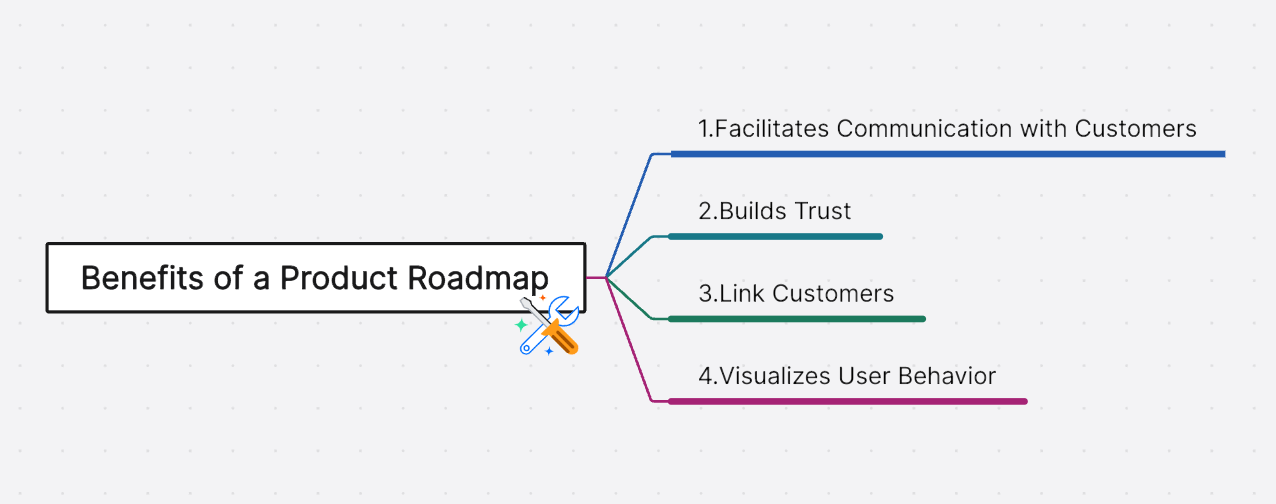
How to Create a Product Roadmap
Now that you understand the importance of a product roadmap, let's break down the process into five steps:
1. Identify Your Target Market
Determine your target market to ensure your product roadmap addresses their needs and preferences. Start by analyzing your user base and their goals. Create a user persona that represents your ideal customer, and map out their journey from discovering your product to making a purchase. You can use tools like Boardmix, which offers user persona templates to help you build a detailed profile.
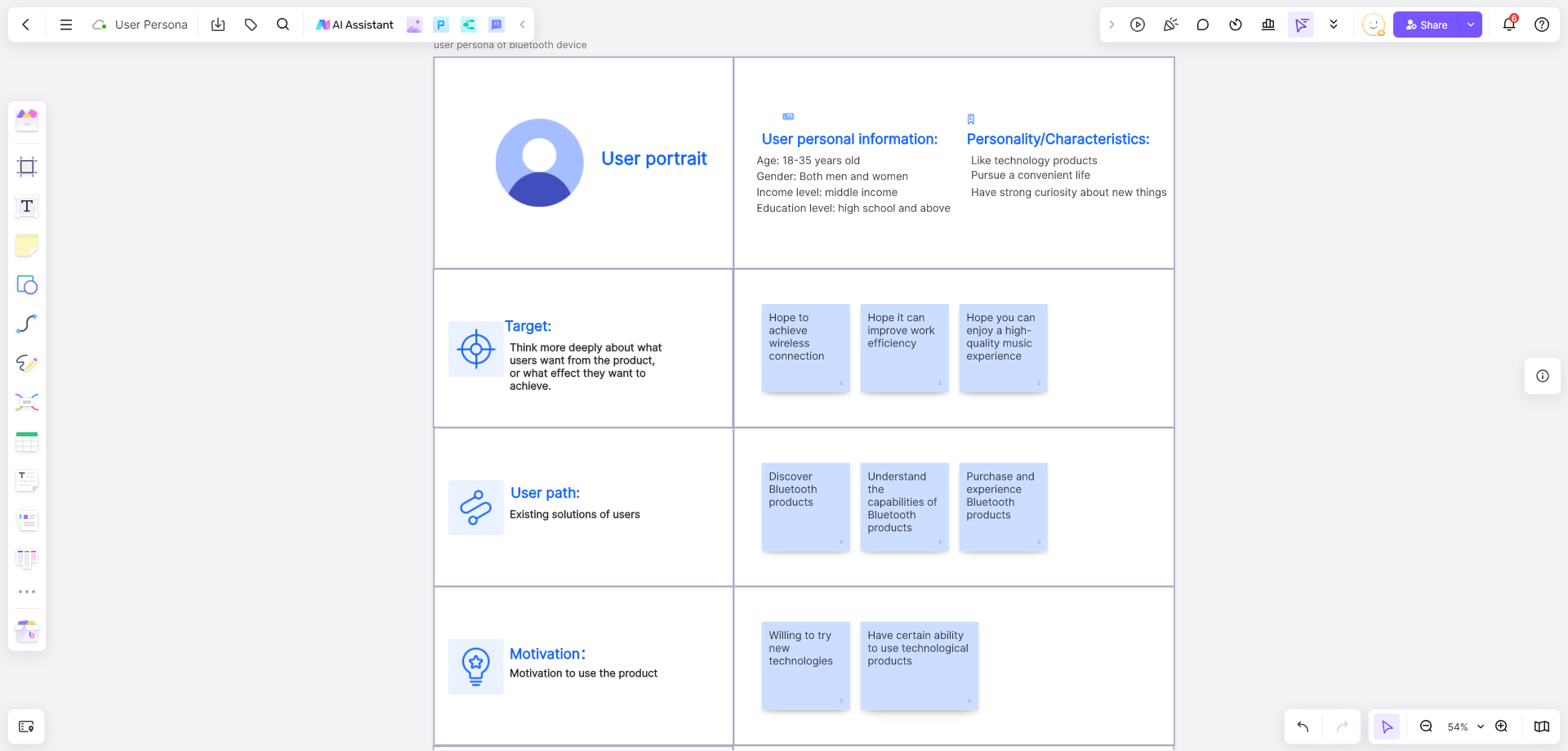
2. Outline and Plan Your Product Roadmap
Your product roadmap should be clear, logical, and aligned with your company's overall direction. Avoid over-complicating the roadmap. Start by establishing your company's broader goals, then create specific steps to achieve them. Always keep the end-user in mind, as the roadmap should reflect what your customers want.
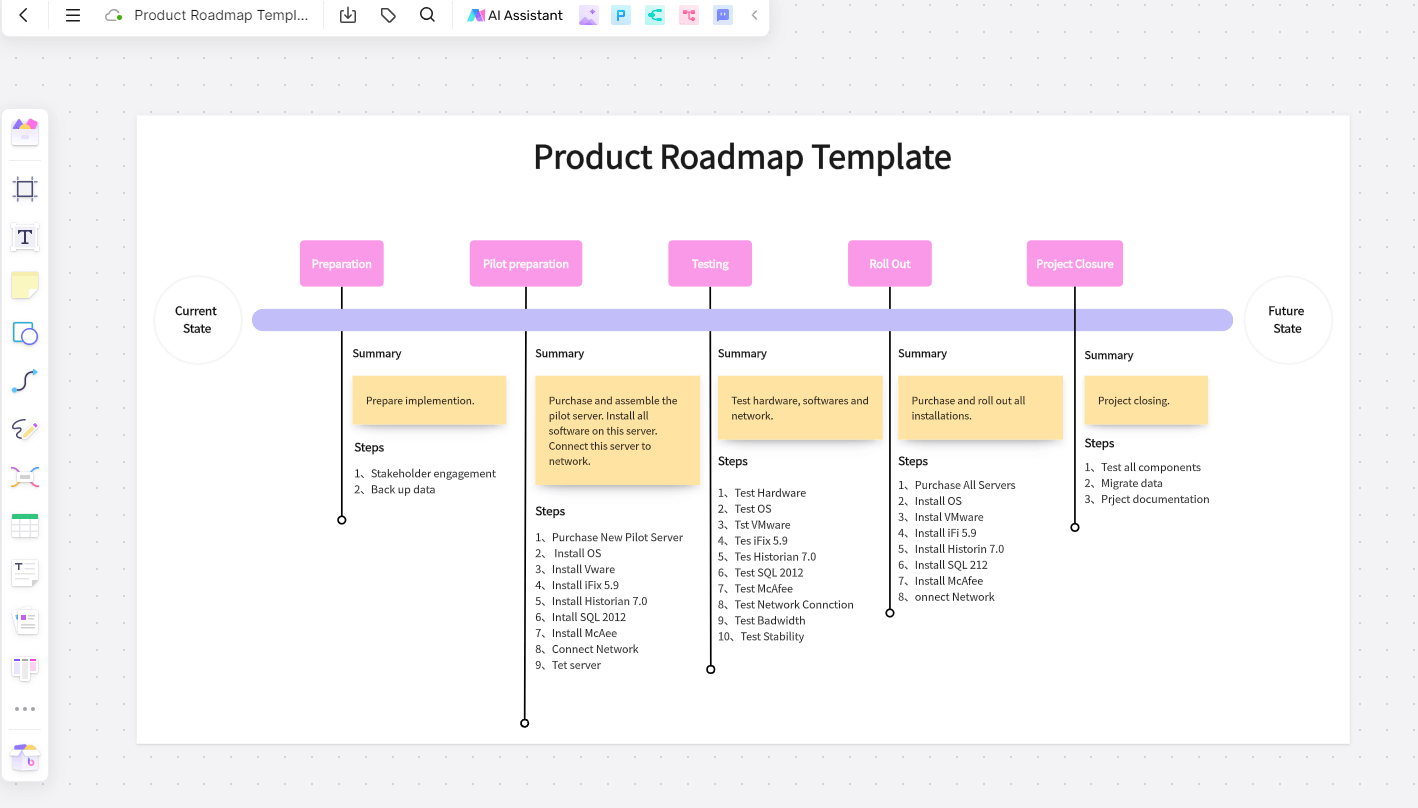
3. Conduct Competitive Analysis
In today's highly competitive market, it's essential to understand your competitors' strategies. Be prepared for your product roadmap to be scrutinized by competitors, focusing on analyzing their product designs, target customers, sales channels, and marketing strategies. Tools like Boardmix have templates for competitive analysis to help you get started.
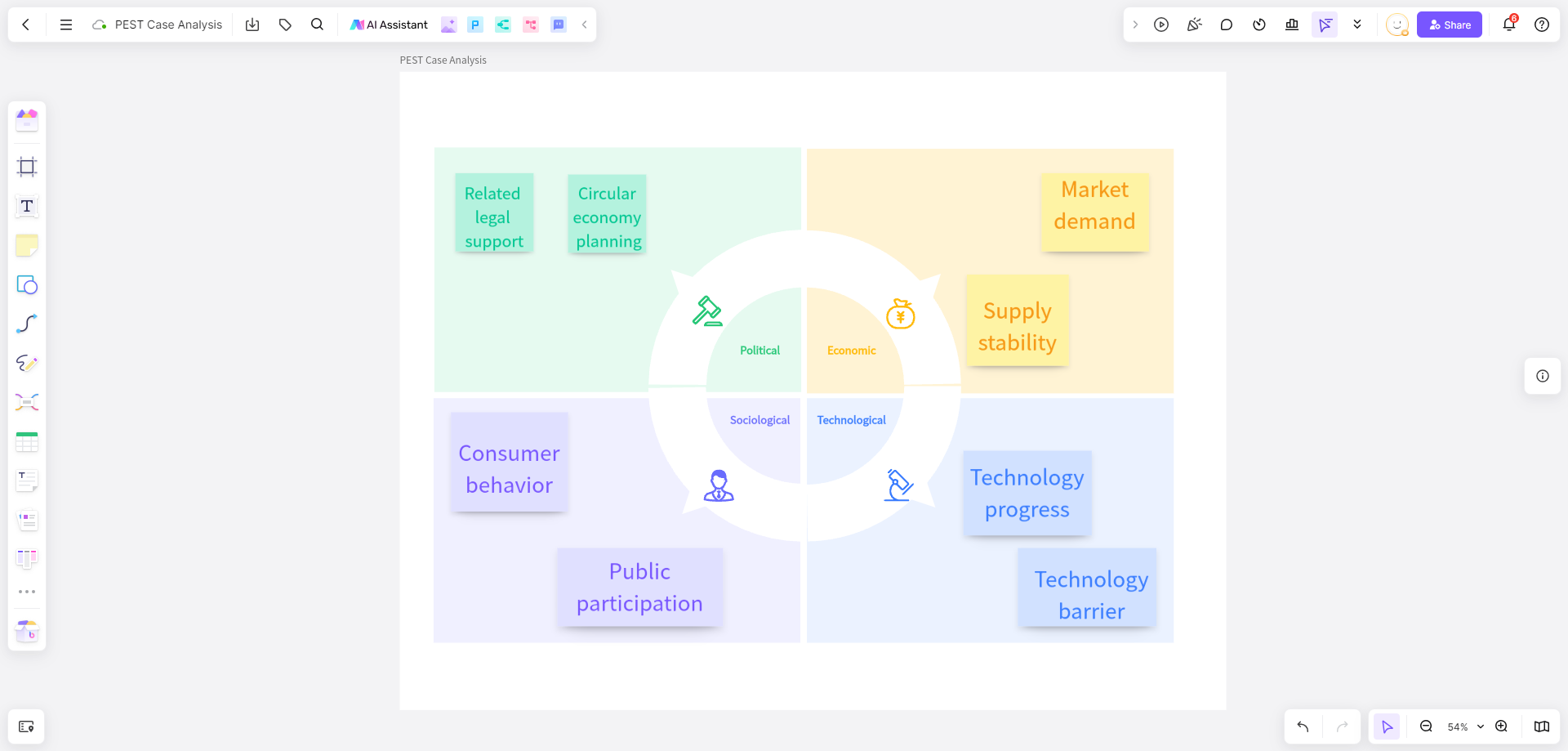
4. Ensure Promises Are Achievable
A product roadmap serves as a communication tool between your company and your customers. If you make promises, be sure you can keep them; otherwise, you'll risk losing customer trust. Consider sharing your roadmap with customers to gather feedback and adjust plans accordingly. This will help meet consumer needs and expectations
5. Create an Interactive Product Roadmap
An interactive product roadmap allows you to gather valuable market insights and public feedback. By keeping the roadmap open to customer input, you can better understand the strengths and weaknesses of your projects and adapt your strategy as needed.
These steps will help you create a product roadmap that is effective, customer-focused, and adaptable to changing market conditions.
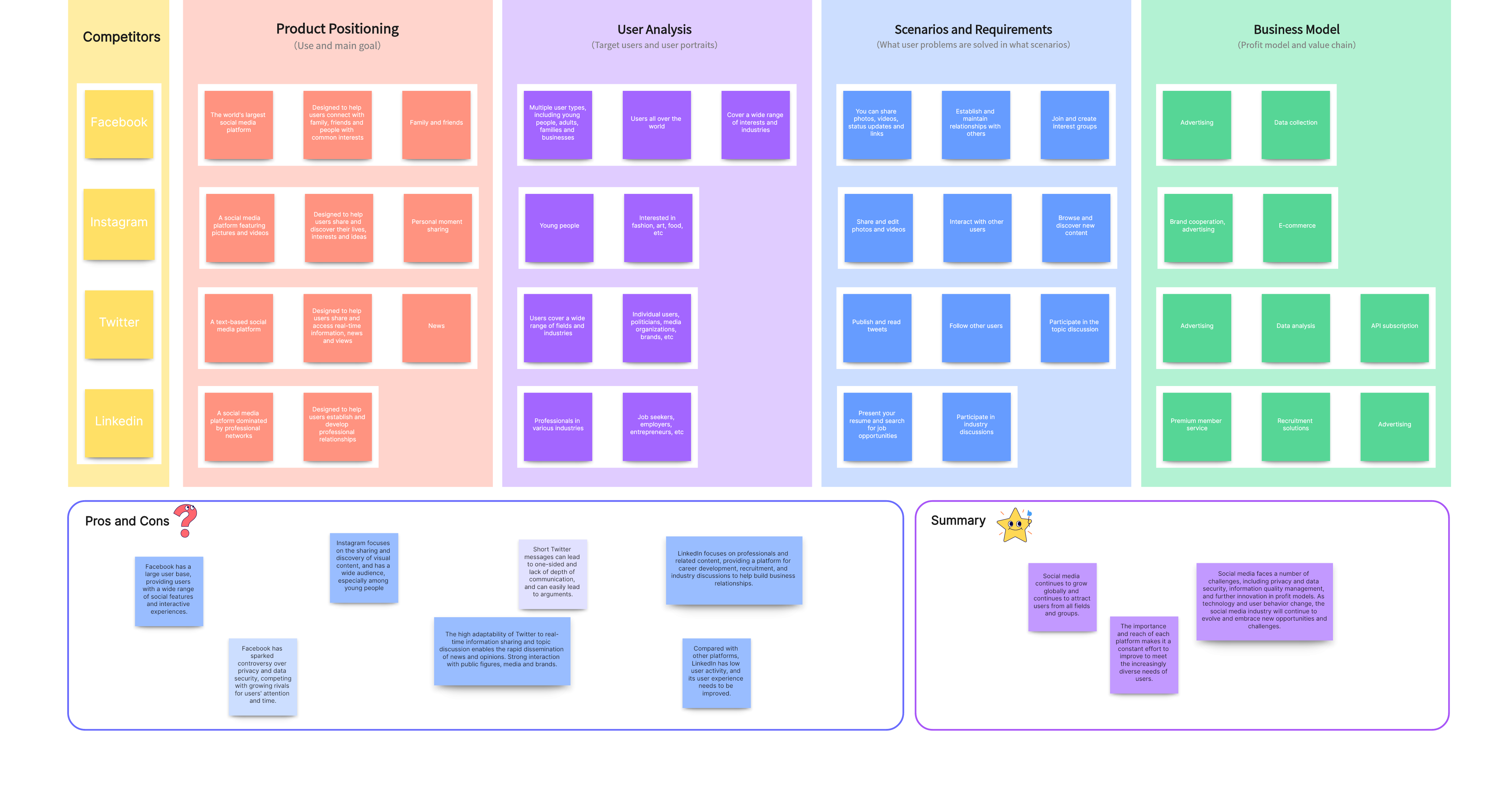
The Company can set a comment section into the product roadmap when sharing it publicly, which is beneficial to encourage customer feedback. By collecting customer suggestions, companies can improve their products and increase their chances of success. A product roadmap fosters active communication between a business and its customers, leading to product enhancements and building customer loyalty.
During product development, many product managers turn to Boardmix. This versatile tool offers features like flexible layouts, drawing tools, sticky notes, multimedia presentations, mind maps, and document integration. It's great for creating flowcharts, brainstorming, online meetings, product requirements analysis, and managing the product life cycle. Boardmix's robust collaboration features make it a favorite among product teams.








